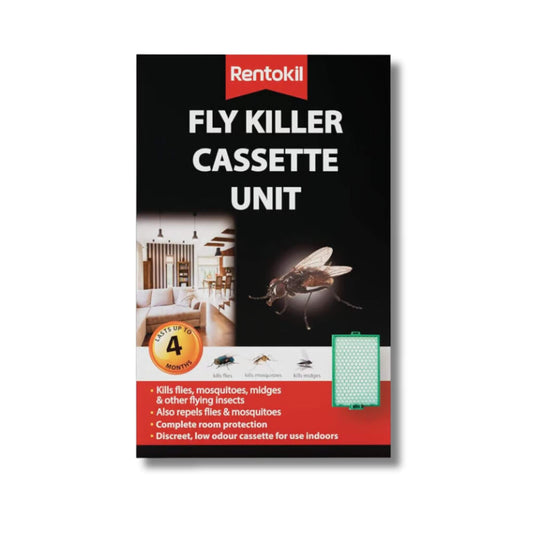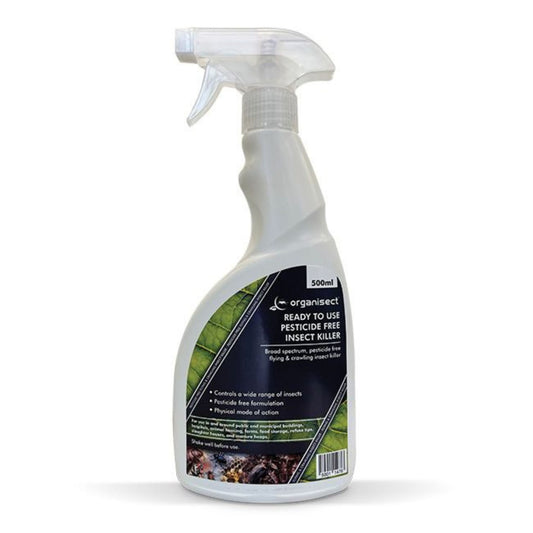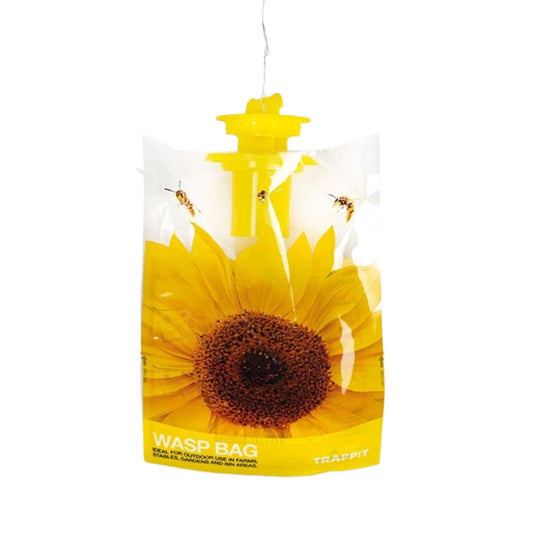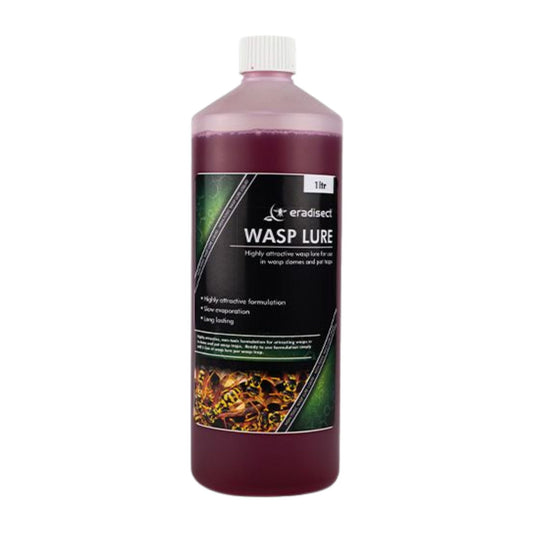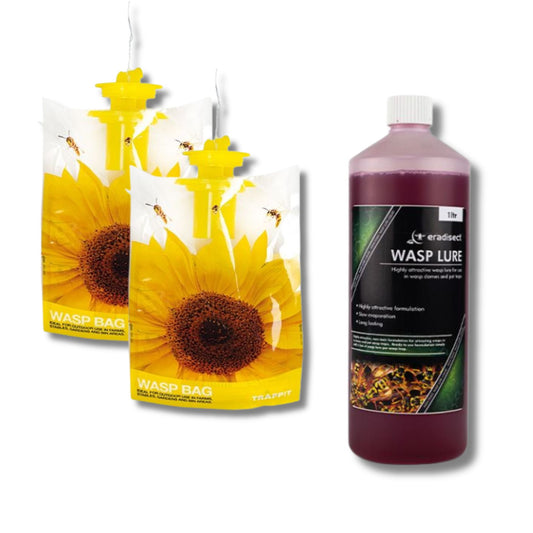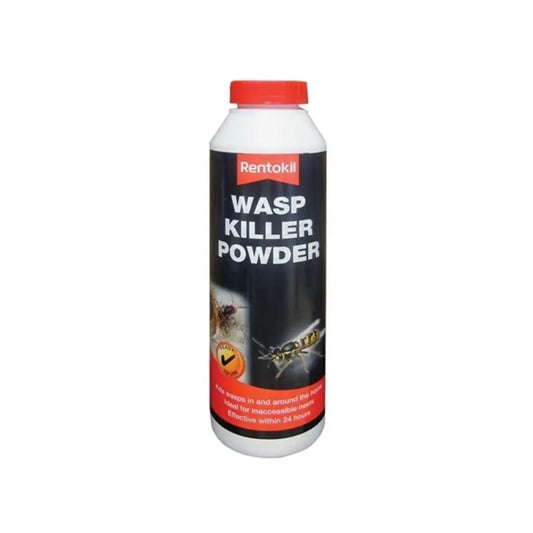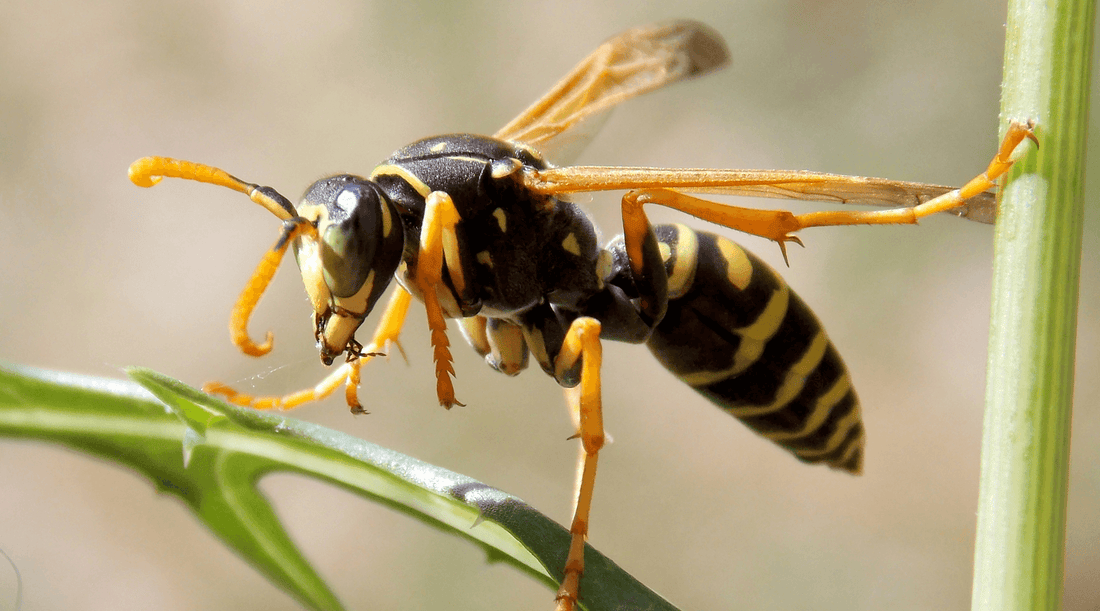
Expert Guide on How to Get Rid of Wasps Yourself
Share
There aren't many pests more annoying than wasps. These social insects have a bad reputation and a worse attitude and are famous for their ability to deliver painful stings when they feel threatened.
Wasps aren't just a nuisance. For people allergic to the venom, they can cause anaphylactic shock that in extreme situations, can be life-threatening.
Even if you aren't allergic, wasps can be painful to tangle with.
Wasps are warm-weather pests that go dormant in the winter. They eat a wide range of foods, including many things humans eat, so if you have a meal or drink outside, wasps may start to bother you and get defensive when you try to scare them away.
Depending on the situation, it's possible to get rid of wasps yourself. Remember, wasps can be dangerous, and you can be allergic without even knowing it. If you aren't completely confident in how to get rid of wasps by yourself, consider hiring a professional to do it safely.
Understanding Wasp Behaviour
What Are Wasps?
We all learn about wasps as kids - often in a painful way from being stung by them. The UK is home to several species of wasps, including the Common Wasp (Vespula vulgaris) and German Wasp (Vespula germanica).
Whatever species you are dealing with, wasps are easily identified by their black and yellow stripes. But remember that bees have the same colour scheme. And while bees can sting too, they are much less aggressive and should be left alone, as they are important pollinators.
Wasps also play an important role in the natural world. They are predatory insects that eat lots of other species, and they keep the population of plant-destroying insects such as aphids under control.
That doesn't make it easier to live with these stinging pests.

Wasp Lifecycle and Nesting Habits
Wasps are social insects. That means like ants, which they are closely related to, they live in colonies. The queen is the only member of the colony that can reproduce, and the only one that survives the winter.
Wasp queens spend winter in a dormant state, then emerge in the spring as the weather gets warmer. They start laying eggs, and these eggs hatch out to become new larvae followed by pupa followed by mature wasps that work with the queen to build the colony.

Wasps build complex and sturdy nests out of paper. They chew wood into a pulp and use it to construct cells where the queen will lay eggs. They like to nest in locations sheltered from rain and wind, and will often build walls on the outside of the nest to protect the young. A mature wasp colony can be home to thousands of wasps. However, all of these wasps die in the winter, and they don't reuse the same nest the next year but build a new one instead.

The original queen will die with the colony, but before she does, she will create new queens. Once impregnated, these queens will go dormant over the winter and emerge in the spring to start nests of their own.
Dangers Associated with Wasps
Wasps aren't dangerous in the same way that, for example, traffic is. But by UK standards, they are one of the more dangerous insects out there. Their stings are painful, and for people with allergies, they can cause a life-threatening condition called anaphylactic shock. Allergic people should stay well away from wasps at all times.
If enough wasps sting you, you can go into anaphylactic shock even if you're not allergic. Plus, just because you weren't allergic last year doesn't mean you won't be this year.
Wasps use their stings to paralyze prey and to defend their nest. When they feel threatened, wasps release a pheromone that tells other wasps there is danger, so if you get close to a nest, you may be stung multiple times by multiple wasps.

Identifying Signs of a Wasp Infestation
During a British summer, wasps are everywhere. Because of their distinctive colour and the droning noise they make, they're easy to spot.
Seeing one wasp flying around doesn't mean much. Wasps can travel 500 m or more from their nest However, if you see lots of wasps in a particular area, there might be a nest nearby. Especially if you see wasps going into a garden shed, under the eaves of the house, or a crack in a wall.
Sometimes, wasp nests are visible. In early spring, they may be only the size of a golf ball, but by late summer, they can be the size of a beach ball.
Finding the nest is the key to getting rid of wasps. Killing individual wasps is never going to solve your problem. But you need to be careful taking on a mature wasp nest.
Common Nest Locations
- Trees.
- Inside bushes and hedges.
- Under eaves.
- Garden sheds.
- Porches.
- Wall cavities.
- Sheltered areas like kids' playhouses and slides.

Preventing Wasp Infestations
Wasps are a fact of life, at least during summer. And because they can fly a considerable distance from the nest, it's unlikely you can keep them off your property completely. But you can make your home less appealing to these creatures:
- Regularly inspect potential nesting sites during the spring when nests are smaller.
- Seal gaps and crevices in walls, garages, and sheds.
- Install mosquito screens to keep wasps out of your home.
- Use garbage bins with tight-fitting lids to keep wasps out.
- Don't leave sugary drinks and foods outside.
- If you have fruit trees on your property, pick up fallen fruit quickly and get rid of it.
DIY Wasp Control Solutions
To take on wasps by yourself, you need to be prepared. Wasps aggressively defend their nests, and you are likely to get stung. That's why it's essential to learn about how to kill or remove wasps safely.
Wear protective clothing. That means long sleeves and trousers and heavy-duty gloves, such as leather gloves wasps can't sting through. You also need face protection. A hat with a mosquito net or a beekeeper's veil hat will protect your head.
Wasps are most active in the hottest part of the day. It's better to tackle a wasp nest early in the morning or late at night when they are less active. You can use a torch with a red filter to provide light; wasps can't see red light, so it won't wake them up.
If the nest is visible and not too big, you may be able to treat it directly.
Wasp Nest Sprays
Taking down wasp nests means targeting the Queen and her young which are generally in the middle of the nest. You can get wasp spray from DIY stores. Some sprays come as an expanding foam to reach all the cells of the nest. Others have high pressure so you can spray the nest from a long distance away.
Always make sure to follow the instructions on the label carefully. When treating wasp nests, you need to move fast. Spray the nest as thoroughly as you can and then get away as quickly as possible. The closer you are to the nest, the more likely you are to get stung.
Insecticides
There are also residual insecticides you can apply to the entrance of a nest. This is helpful when you can't see the nest, and only see a gap or crack wasps are going into. Apply residual pesticide - usually a dust - according to the instructions, and don't use too much. You want the wasps to walk through the insecticide and carry it into the nest to slowly kill them.
If you don't know where the wasps are nesting, or if they are nesting away from your property, it's harder to get rid of them. You may not be able to get rid of wasps completely, but you can trap foraging wasps to get the numbers down.
We recommend considering a natural, non-toxic insect killer spray for small-scale DIY purposes as it is safer for both you and the environment.
Wasp Traps
You can buy reusable wasp traps or disposable wasp traps and fill them with a non-toxic wasp lure to attract wasps and stop them from escaping.
Alternatively, make your own wasp trap from a plastic bottle. Cut off the neck of the bottle, then take the cap off and put the neck back in the bottle upside-down. Staple or tape it in place. Then, fill the bottle with sugar water to attract wasps who will crawl down into the trap and be unable to fly out.
Remember to place traps away from doors and windows to avoid luring wasps inside.
When DIY Methods Are Inadequate
Inaccessible nests - for example inside walls or in tall trees - are a real challenge. Plus, late in the year when the nests are bigger, it may be dangerous trying to get rid of wasp nests yourself. If there are large numbers of wasps aggressively defending the nest, consider calling a professional to get rid of your problem safely. Many companies provide a guarantee that they will destroy the nest, and wasp removal is one of the cheapest forms of pest control.
Treating Wasp Stings
If you do get stung, here's what to do:
- Wash the area with soap and water.
- Apply a cold compress to reduce swelling and pain.
- Avoid scratching to prevent infection.
- Cortisone cream can reduce itching.
When to Seek Medical Attention
Watch for these signs of an allergic reaction:
- Swelling of the face
- Difficulty breathing
- Dizziness
- High temperature and swollen glands
- Nausea
If you experience these symptoms after a wasp sting, contact emergency services.

Final Thoughts
If you have a wasp nest on your property, it is possible to get rid of it yourself. But remember that safety comes first. If the nest is big, inaccessible, or you even suspect you may be allergic, call a professional instead.
If you are going to get rid of a wasp nest yourself, remember to use protective clothing.
The best way to deal with wasps is to make sure you never have to spray a wasp nest yourself. Remove attractants like food sources and block off sheltered areas where wasps may build a nest. These wasp-repellent activities will help you stay safe while you enjoy the outdoors during the summer.
At PestBuddy, we're here to empower you with safe, effective, and easy-to-use DIY wasp control products. Explore our range of products to take control of your pest problems with confidence.

